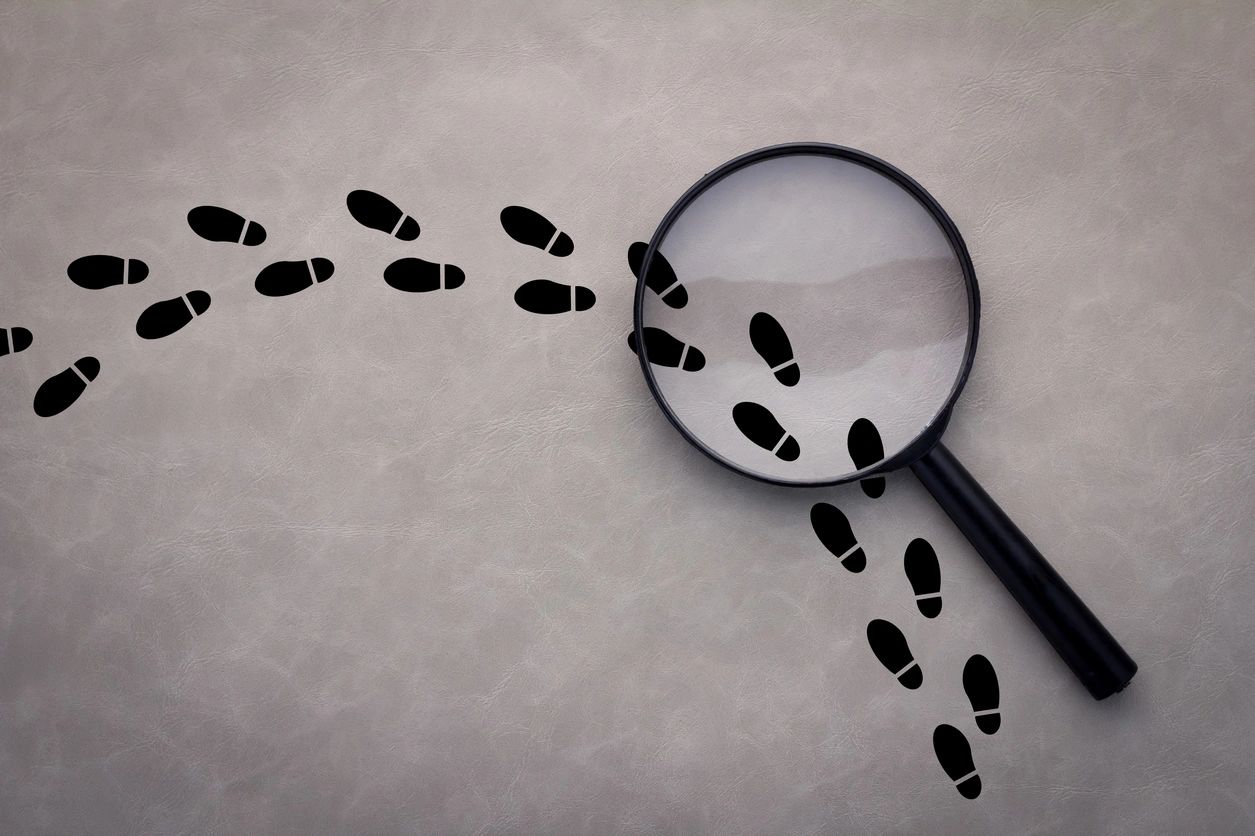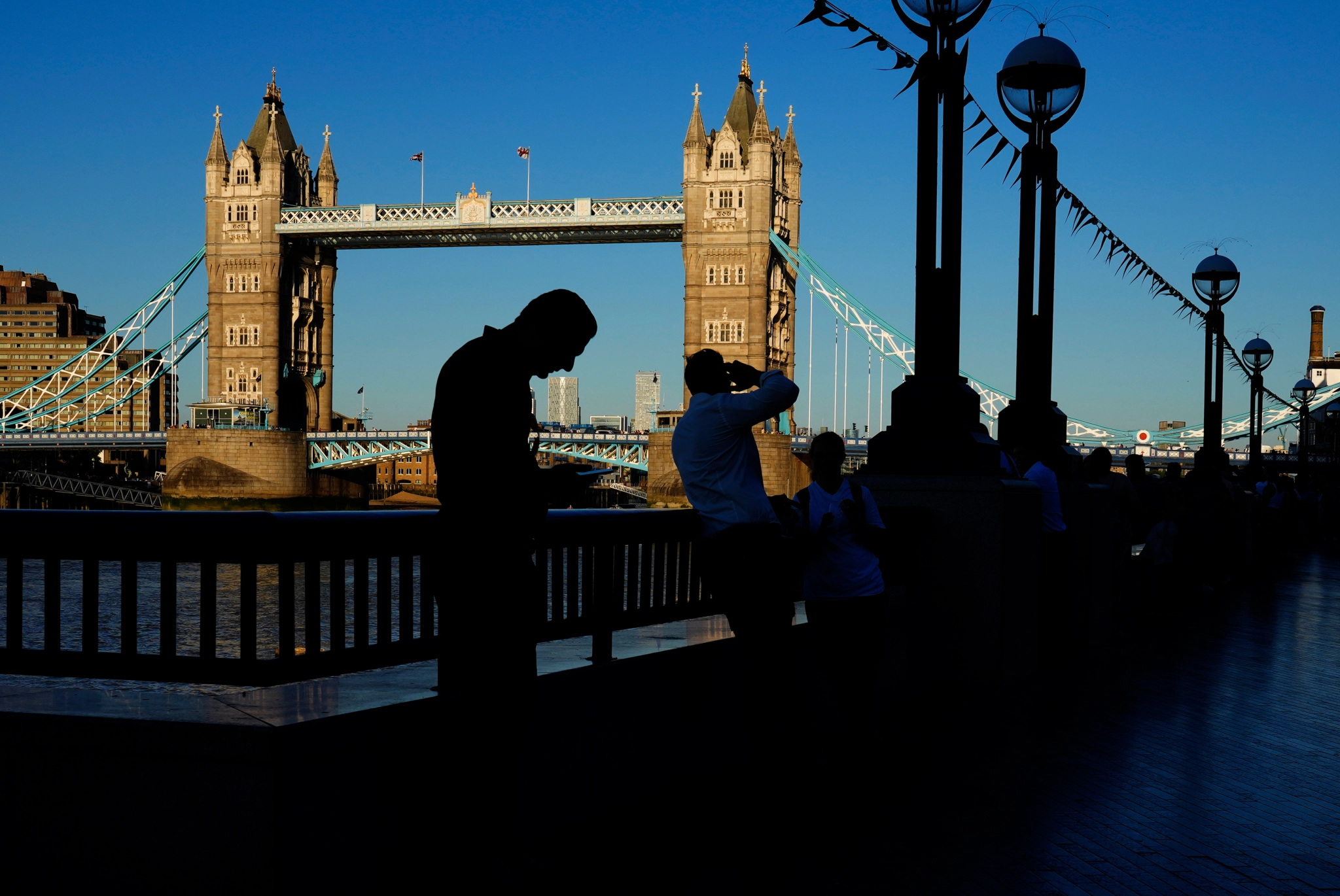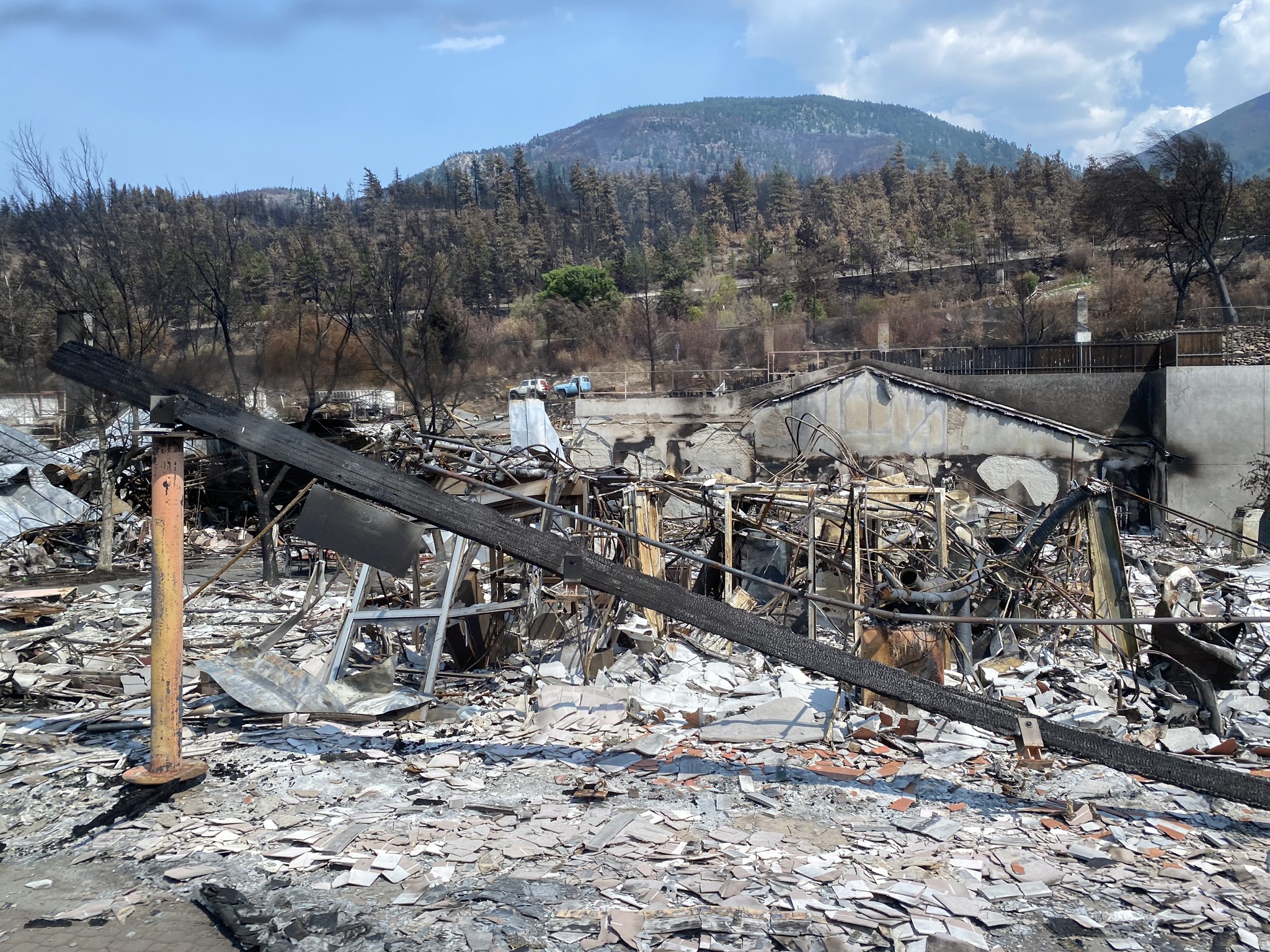Eight people face a total of 40 charges resulting from a years-long police investigation into the forgery of artwork by Anishinaabe artist Norval Morrisseau.
The Thunder Bay Police Service in northwestern Ontario began the investigation in 2019 and later brought in Ontario Provincial Police due to the magnitude of the investigation, the TBPS told CBC News. Five of the accused are from Thunder Bay.
“I was looking into the murder of Scott Dove, and during that, his mom called me and asked if I had seen this documentary called There Are No Fakes, which had information on the murder of her son,” TBPS Det. Sgt. Jason Rybak said following a news conference in Orillia, Ont., on Friday morning. “I had not, and I watched the documentary.
“From there, I reached out to Kevin Hearn, who was the main victim in the documentary, and that really was the jump-off point for this investigation.”
There Are No Fakes, a film released in 2019, includes the story of Hearn — the Barenaked Ladies keyboardist and guitarist who purchased a purported Morrisseau painting from a Toronto gallery in 2005. Questions were raised about the painting’s authenticity, and Hearn would eventually sue the gallery; he was later awarded $60,000 in compensation by the Ontario Court of Appeal.
‘Painting, after painting after painting’ seized
Morrisseau, who died in 2007 at age 75, was a renowned artist from the Ojibway Bingwi Neyaashi Anishinaabek First Nation in northwestern Ontario. He’s known as the founder of the Woodlands School of art and his work has been exhibited in galleries across Canada, including at Rideau Hall in Ottawa.
Rybak said the investigation led police to obtain a warrant to search the home of Gary Lamont, one of the eight people charged in the Morrisseau investigation, and during the 2019 search, police “started seizing painting, after painting after painting. And we we quickly realized the magnitude of what we were getting ourselves into.”
Rybak said TBPS then contacted the OPP and the two services worked together on the investigation.
Lamont is one of the five people from Thunder Bay who were charged as a result of the investigation: the others are David John Voss, Diane Marie Champagne, Linda Joy Tkachyk and Benjamin Paul Morrisseau.
Also charged are Jeffrey Gordon Cowan of Niagara-on-the-Lake, James White of Essa Township and David P. Bremner of Locust Hill.
OPP Det. Insp. Kevin Veillieux said the investigation was “very difficult.”
“The authentication is a multifaceted approach,” he said. “We don’t take a painting, and just take one aspect and say, ‘Oh yes, this is a fake.’
“We conducted a wide range of witness interviews that provided very valuable information,” Veillieux said. “We had reached out to different groups that had the ability to do certain forensic testing for us.
“I’m not at liberty at this point to discuss exactly who they were and exactly what they did, as the matter’s before the courts, and to ensure the integrity of the investigation,” he added. “I would just say that as of as a result of witness evidence and technology with our partners we engaged, we were able to determine the difference between real and fake paintings.”
The investigation led to the seizure of more than 1,000 pieces of forged Morrisseau artwork.
The elaborate scheme explained
Rybak said the eight accused were part of three distinct, yet intertwined groups that created the fraudulent artwork. The first group was launched in 1996 and operated in Thunder Bay “exactly like a production assembly line.”
Another group started in 2002, and brought in talented Indigenous artists to create the paintings. Finally, a third group began operating in southern Ontario in 2008.
The three groups traded paintings back and forth, and two of the accused were involved in the distribution of paintings by all three groups.
The fraud also included creating fake certificates of authenticity.
In a media release, OPP said some of the paintings, prints and other pieces of artwork that were seized had sold for “tens of thousands of dollars to unsuspecting members of the public who had no reason to believe they weren’t genuine.”
Veillieux said the fake paintings were seized from private collections and galleries.
“The small mom and pop that may have purchased one, they were completely devastated that they’d they’d spent a substantial amount of money on these as somewhat of an investment,” he said. “They were obviously very angry, some of these people.
“Some were very hurt, embarrassed.”
Rybak said money was the main motivation for the fraud, but there was another reason Morrisseau’s work was targeted.
“They knew his lifestyle,” he said. “They knew that he had struggles. They knew that he never kept a list of his paintings.
“There’s lots of stories from people still alive in Thunder Bay and in Red Lake and Beardmore of the struggles,” Rybak said. “At times he would just give paintings away to people for milk and and eggs, and so they knew that there was no way in their mind of tracking legitimate paintings.
“And so in ’96 when it started, it was slowly interjected into the actual art galleries. I can tell you we believe that there’s a fake in the Smithsonian in Washington.”
Cory Dingle, who runs the Morrisseau estate, said he was aware of the investigation and suspects there are thousands of fake Morrisseaus out on the market.
“Think of the damage to all the Canadian artists … when we talk about all art is relational to the greats,” he said. “If I could go and I can buy a painting that should be half a million dollars for $5,000 on eBay, and that’s the greatest artist that you have, what is the 2nd, 3rd or 4th artist going to get?
“Nothing,” he said. “It’s all relational. So the damage to Morrisseau’s art legacy has an effect across the entire Canadian art market.
“Imagine the narrative that we’re dealing with, that we’re showing the world right now — Canada’s greatest artist, one of the world’s greatest Indigenous artists, one of the world’s greatest spiritual and cultural icons of Canada in the Indigenous community has been has been defrauded.”
Artist says he and others inspired by Morrisseau
Patrick Cheechoo, an Indigenous artist from Constance Lake First Nation, said he was influenced by Morrisseau’s work, as well as the creations of artist Carl Ray.
“I actually have a distinct and fond memory of seeing their artwork in and around Thunder Bay, Norval Morrisseau and Carl Ray, and would stand there and just admire their work,” Cheechoo said. “This was maybe where I was maybe a year, maybe two years into painting myself.
“That was a big starting point for me and my love for painting.”
Cheechoo also said he wasn’t the only one inspired by those artists.
“If you’re entering a public space and you see the art from these pioneers, it’s welcoming, but it’s also inspiring to know that you could have your art prominently displayed in public push spaces as well.”
Cheechoo said he hopes the Morrisseau forgeries don’t have a negative effect on young Indigenous artists.
“The biggest thing for me is the positive impact that Norval Morrisseau and Carl Ray had in bringing credibility and valuation to First Nations art,” he said. “I don’t want to see that taking a step back because of a minority or small group of people.
“I especially don’t want to see any kind of negative portrayal or impact on the young artists that are teenagers, [and in their] 20s and 30s,” Cheechoo said. “I would hate to see these young artists pay penalties for [the] actions of a few.
Think you have fake art? Seek legal advice: police
Veillieux said people who suspect they may have a fraudulent Morrisseau painting are advised to contact legal counsel.
“We have to emphasize that the OPP and the Thunder Bay police collectively, we cannot take paintings and determine real versus fake from anybody that brings them,” he said. “To us, this was a concerted effort that included multiple facets on how we came to the conclusion that some were real and some were fake.
“If at some point we determine that there is credible information, evidence to support or suggest criminality, we would address that as appropriate as it came in.”



